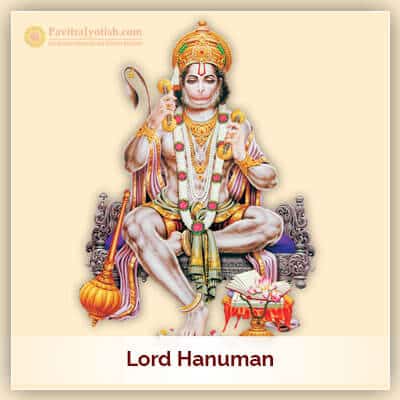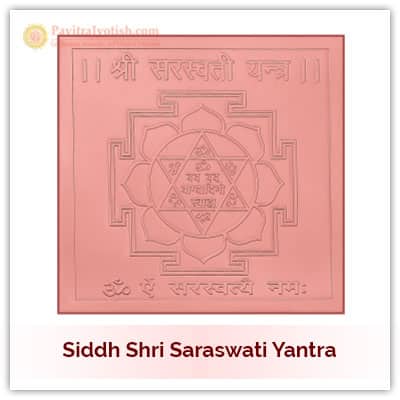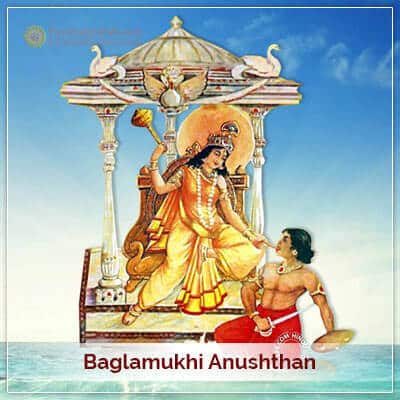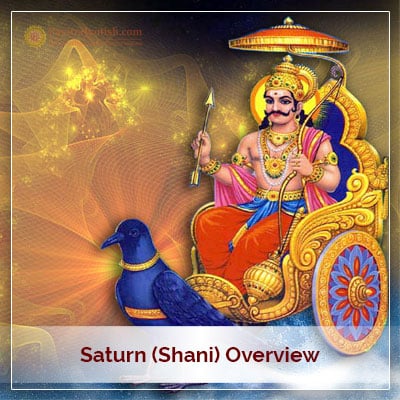About Lord Hanuman
Published On : April 3, 2019 | Author : Astrologer Pt Umesh Chandra Pant 
Improve Your Knowledge About Lord Hanuman With This Detail
Detailed Information About Lord Hanuman
India assumes the role as world’s biggest spiritual land entrenched in whose roots are boundless and multidimensional divine authorities, who respectively individualize their prominence, reverence, authority, relevance, and dominance; and also with whom dedication, the life of devout followers gets blessed with peace, happiness, joviality, constructive solutions for sufferings on emotional and physical fronts, and incessant prosperity. Among such innumerable counts of divine manifestations in the spiritual land of India also comes one deity, whose supreme authority as the divine almighty is hailed, not only in deep regards but also in practice by numerous devotees from all over India, and that divine being is HANUMAN, also known as Bajrangbali, Chiranjeevi, Pavanputra, Vayuputraya, Viraya, Mangalmurti, Maruti and other names, including divine monkey.
Birth of Lord Hanuman
The birth of Lord Hanuman dates back to the era when Kesari and Anjana used to live in a thatched ashram located adjacent to the mountain Meru. Mata Anjana was once a heavenly elf (apsara) but took the form of a she-monkey due to a curse she condemned to, following her unintentional offense to a sage monkey sat on meditation in a forest. She mocked the meditative monkey by laughing out at him and continued showing derision until her blasphemous chortles drained the patience of the sage monkey who, in rage, cursed her. According to the curse, Anjana was to bear the form of a monkey and will be absolved of the curse after bearing a mighty baby boy, an incarnation of Lord Shiva himself. Both Kesari and Anjana observed meditation to Lord Shiva for eons without the support of foods and water, until Lord Shiva became pleased and granted the boon to Anjana to conceive an immortal child, later known as Hanuman.
Besides, Hanuman is also said to be the son of Vayudevta (The Lord of Wind) for his alleged role, according to a mythological story, in the birth of Hanuman. Another story reveals that when Dasharatha, the king of Ayodhya kingdom, was performing Putrakameshti ritual for having sons to three of his queens, he received a bowl of pudding in return for the ritual by fire God. The pudding was to be shared with his three queens who later gave birth to sons, Rama, Lakshmana, Bharata, and Shatrughna, respectively. As the divine cycle had it, a kite hovering nearby snatched some fragments of the pudding and flew down to a jungle. While the bird was flying over the place where Anjana sat on meditation, it dropped the fragments of the pudding. Vayu later delivered the pudding to Anjana’s (in meditation then)outstretched hands. Anjana, thinking that the pudding was of a gift from God, consumed it, leading to the birth of Hanuman.
Childhood of Lord Hanuman
Lord Hanuman was not only brave but also a mischievous child who used to tease sages in meditation pose. One incident of his mischief led to disturbing some sages who, in rage, cursed Hanuman that he would forget his power, until, as pleaded for mercy by Mata Anjana, baby Hanuman was to be recalled to his power. Another incident reveals that baby Hanuman was instructed by mother Anjana to eat any fruit of a red color as it bears a sign of ripened and so is edible. However, that instruction took its negative interpretation when baby Hanuman saw the morning sun bearing red appearance. He mistook it as a ripe fruit, he flew down to eat it, only to being struck by thunderbolts ofLord Indra, who came to rescue the Sun when the latter asked for his intervention to stop baby Hanuman from eating him. Seeing Hanuman fainted by thunderbolts of Lord Indra infuriated Lord Wind, who then took the baby to Patal Loka and stopped the wind flow. The absence of wind caused terrible commotion all over the universe and earth due to asphyxia it caused and so Lord Brahman had to intervene requesting Vayu to release the wind flow to revert life cycle on the earth and the universe to normalcy. Further, Gods blessed Hanuman with different types of boons. For instance, longevity &wisdom by Lord Shiva, invincibility by Lord Brahman, immunity from fire by Lord Agni, happiness and contentment by Lord Kuber, and speed by LordVayu, while celibacy by LordKamadeva.
Adulthood of Lord Hanuman
According to the epic Ramayana, Lord Hanuman was living with Sugriva, who was the younger brother of Bali, the king of Kishkindha, who banished Sugriva from the kingdom and also enslaved his wife. In exile, Sugriva was living in a hideout at the mountain of Rishyamukh with his friends, Hanuman being the closest one. The exile of Sugriva was the outcome of his misunderstanding when he and Bali, outside of Kishkindha, fought with the demon Maayaavi. It was Bali engaged in a pitched battle with the demon and when the latter was subdued; he quitted the fight midway and ran for life to a darkened cave.
Bali told Sugriva to stand guard on the cave’s entrance till he comes back after killing the demon. However, Bali did not return for many days and suddenly Sugriva heard painful cries coming from the darkened cave accompanied by a river of blood, which Sugriva assumed to be of his brother’s. Brokenhearted, Sugriva returned to Kishkindha and everyone knew that Bali was killed. Sugriva was anointed as the king of Kishkindha. However, Bali returned to the kingdom unscathed. Seeing his brother assuming kingship role enraged him and he ostracized Sugriva, even though the latter tried to explain his stand. Lord Hanuman, at that time, was one of the chief advisors to king Bali but a close friend to Sugriva. When the latter was exiled, Hanuman also followed him to the mountain of Rishyamukh thereby exemplifying true friendship with Sugriva.
It was Lord Hanuman who consoled Lord Rama and Lakshmana when the duo was on a quest to Sita, the wife of Rama, kidnapped by Ravana, the king of Lanka. Hanuman took them to Sugriva, who later sent his monkey troops to all the four directions in search for Sita Mata, with Hanuman and few other comrades who set forth to a direction but came to standstill before the enormous ocean cutting their way off to Lanka, an address leading to the captor of Sita. Here Hanuman was recalled to his power by friends like Jambavan, Angad, Nal, Nil and other monkeys who sang in praise of Hanuman. Soon Hanuman bore gigantic appearance and leaped across the ocean with thunderous praise for Lord Rama.
The support of Lord Hanuman in helping Sugriva to foster an alliance with Lord Rama and gain kingship of Kishkindha and his lost glory, and to help Lord Rama on so many occasions like spotting Sita in Lanka, burning the kingdom, giving moral support to Rama about Sita being alive, helping Lakshmana get resuscitated when he brought the entire Himalayan mountain full of herbs, giving full assistance to Rama to win over Ravana in battle, and also conveying his staunch devotion for Rama-Sita when he cleaved open his chest revealing the reflection of Rama-Sita.
Attributes of Lord Hanuman
- Immortal (Chiranjivi) –In the interpretation of various mythological books Hanuman is immune to death, which means he is blessed with the boon of immortality. Unlike Rama and Lakshmana and other characters of Ramayana who die at the end, Hanuman is believed to live even today.
- Celibate (Brahmachari) –Hanuman is blessed by Lord Kamadeva with celibacy which means, lust or any temptation toward materialistic pleasures will never sway over him, given he is the learner of the truth.
- Kama-rupin–Hanumancan bear the form smaller than the smallest and larger than the largest. He used this attribute during his furtive entrance to Lanka in search for Mata Sita.
- Omnipotent (AtulitBalDhamam)–Hanuman is hailed as the strongest of the strongest and is given to fulfilling any cause.
- Wittiness –Hanuman is full of wittiness, an attribute he displayed in Lanka when the royal guards arrested him to face public execution and set his tail on fire. However, the trick to execute him backfired as Hanuman jumped from one rooftop to another burning everything down to ashes.
- Devotion (Bhakti) –Hanuman is known for having staunch devotion for lord Rama and Sita.
- Loyalty – Hanuman has been the truest friend to Sugriva and remained loyal to him forever. During exile of Sugriva, Hanuman abdicated royal consortium of Bali and accompanied Sugriva to the mountain of Rishyamukh. He truly exemplified the adage “Friend in need is a friend indeed.”
- SankatMochan–Hanuman is considered remover of all obstacles and difficulties.
- Learned – The profundity of knowledge of Hanuman is admirable. In fact, as per Tulasidas, Hanumanpossesses in-depth knowledge of Vedanta philosophy and the Vedas.
Benefits of Lord Hanuman Worship
- Brings relief to Marital Problems with the spouse.
- Problems in career or family feuds get resolved with chanting of Hanuman mantras and doing his worships.
- Rejuvenates worshippers from health disorders associated with heart, brain etc.
- Chanting Hanuman Chalisa is a powerful remedial course against psychological problems like depression, anxiety etc.
- Removes Planetary Transits doshas from the life of worshippers.
- People under heavy debts get best solution for their problems with Hanuman’s worship.
- Success in career, and discipline comes in one’s life comes.
- Attainment of pleasant and happy mind becomes possible with Hanuman worship
- Removes one’s bad habits like laziness, adultery, corruption and debauchery.
- Benefits those affected with Shani dasha. It also nullifies the malefic effect of Mangal dasha.
How to Worship Lord Hanuman
Tuesday and Saturday are the days one must choose to worship Lord Hanuman.
Take a clean bath in the morning; arrange necessary materials like idol of Hanuman, wicks, lamp oil, incense sticks, camphor, tulsi leaves and other materials including banana, betel leaves, nuts, and a variety of flowers. Ensconce the idol on an altar, apply kumkum, garland and other materials, sit on mediation pose in front of the idol, and chant beejmantra “Om Shri Hanumate Namah.” Take sankalp and chant his beej mantra 21 times. Also, chant names of Rama, read HanumanChalisa, and conclude the puja with Aarti and offering to Hanuman.
Consult Hanuman Puja to PavitraJyotish for pure and ritual-wise worship of lord hanuman by the team of expert and Top Jyotish Pandit in South Delhi.
Don’t forget to read: Lord Ganesha and Hanuman Jayanti 

























